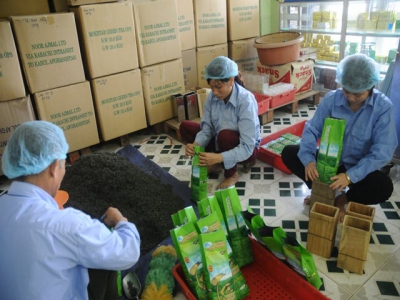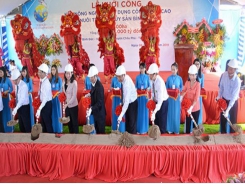Vietnamese exports, not everyones cup of tea

Despite big trade promotion efforts, Vietnamese tea exports to Russia have declined in both volume and value.
Decrease in volume and value
According to the Ministry of Agriculture and Rural Development, in the first 11 months of 2018, Vietnamese enterprises exported 117,000 tonnes of tea products worth US$199 million, down 8.7 percent in volume and 4.2 percent in value compared to the same time in 2017, despite a 4.7 percent price increase during the same period.
In the first 10 months of 2018, tea exports to Pakistan, Chinese Taipei, Russia, China and Indonesia represented 72.6 percent of the country’s total, up 9.7 percent from 62.9 percent in the same period of 2017. However, while tea exports Pakistan and Chinese Taipei increased in both volume and value, those to Russia, the third largest importer of Vietnamese tea in 2018, declined sharply in both volume and value.
According to statistics of the General Department of Vietnam Customs, tea exports to Russia reached only 12,000 tonnes worth US$18 million in the first 10 months of 2018, accounting for 10.6 percent of the total, down 16.9 percent in volume and 10.7 percent in value compared to the same period last year. The main reason was the decline of the Russian ruble Russian ruble against the US dollar.
Russia is the world’s largest tea importer, and Vietnam has become its fourth biggest tea exporter. Vietnam exported about 9,000 tonnes of tea products to Russia per year, accounting for 11 percent of all tea imports by Russia. Ramaz Chanturiya, Head of the Russia-wide Tea & Coffee Association, said Vietnam tea exports to Russia remain modest in terms of value because they lack a unique image in Russia.
Chu Xuan Ai, Director of the Ton Vinh Technology and Trade Development Company Limited, said that in Russia, Vietnamese tea is sold at a higher price than Chinese products of the same kind. Some Chinese traders even used Vietnamese tea labels to sell their products, as Russian consumers prefer Vietnamese tea products to Chinese ones, Ai said. This points to problems related to Vietnamese tea branding and trademark protection in Russia.
Branding
Ramaz Chanturiya recommended that Vietnamese tea businesses to improve their product image and develop new brands.
Nguyen Quoc Toan, acting head of the Ministry of Agriculture and Rural Development’s Department of Farm Produce Processing and Market Development, said Vietnamese businesses and the Vietnam Tea Association need to promote high quality products to foreign consumers if they are to improve tea exports to Russia and other discerning markets.
Although it has become one of the world’s top five tea exporters, Vietnamese tea products have not carved out an
established niche in foreign markets. Branding is an important solution to remedy the problem.
Có thể bạn quan tâm
Phần mềm

Phối trộn thức ăn chăn nuôi

Pha dung dịch thủy canh

Định mức cho tôm ăn

Phối trộn phân bón NPK

Xác định tỷ lệ tôm sống

Chuyển đổi đơn vị phân bón

Xác định công suất sục khí

Chuyển đổi đơn vị tôm

Tính diện tích nhà kính

Tính thể tích ao hồ



 CPTPP brings opportunities, challenges to Vietnam’s agriculture
CPTPP brings opportunities, challenges to Vietnam’s agriculture  An Giang to invest USD 172 million in…
An Giang to invest USD 172 million in…